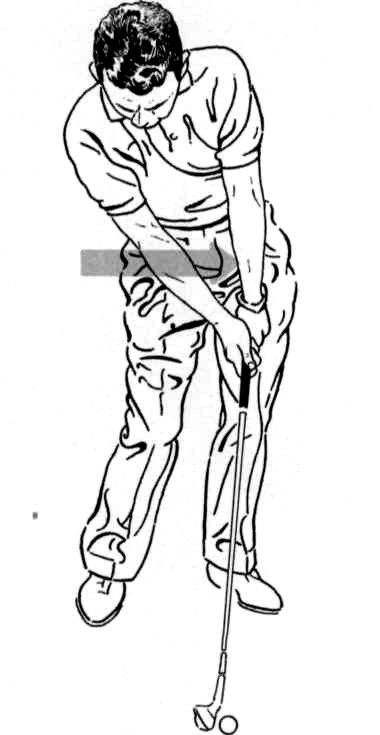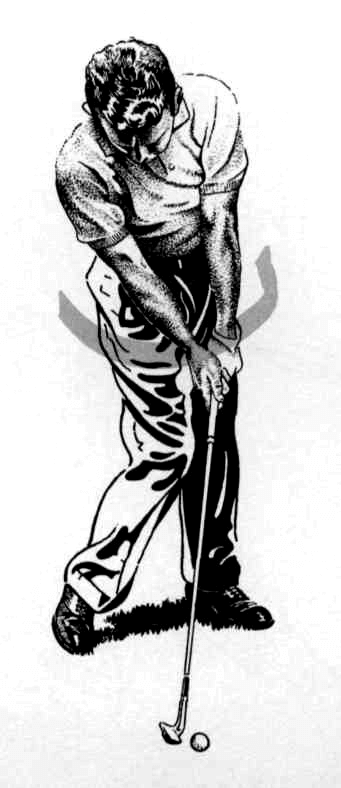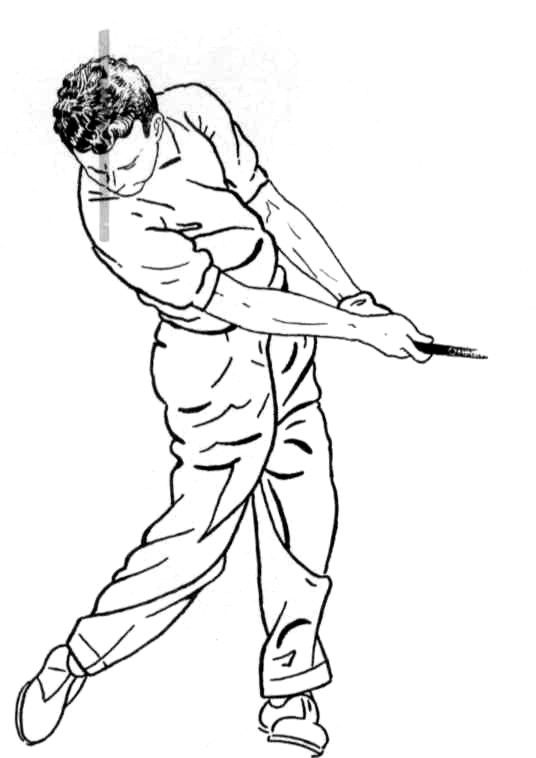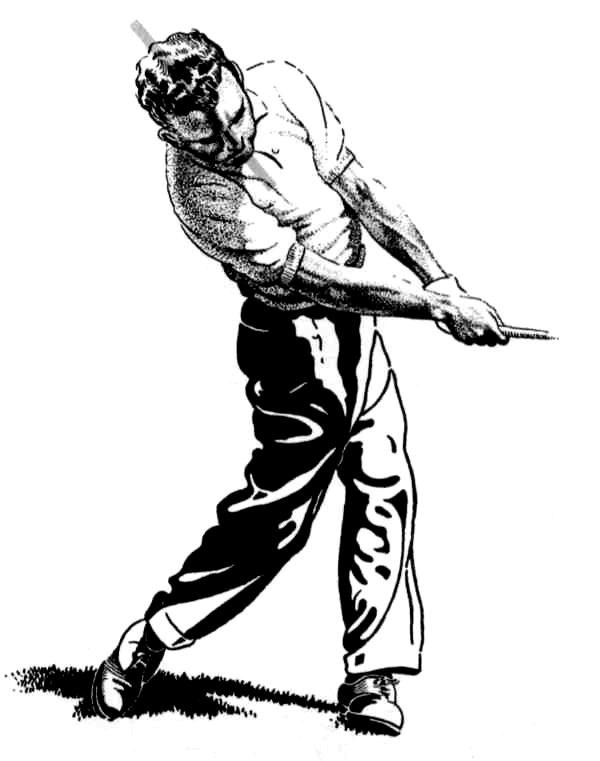A push is a ball that goes directly to the right because of the action of the club. This should not be mistaken for a slice. A slice is an action of the ball spinning clockwise.
A slice normally begins to the target and arcs away to the right, (left for lefties). A push is an action of the swing and is normally in an in-to-out swing motion. The opposite of the push is the pull, which is an out-to-in swing motion.
Actually, the push differs from a good golf shot only in one major respect: The push has the club head moving from inside to outside the target line at impact. On a perfect shot the club head also moves from the inside, but it then continues momentarily along rather than across the imaginary line from ball to target.
There are several major causes of pushed shots. They include:
- Improper alignment at the address position
- Closed clubface at address or on the backswing
- Failure to turn the hips
- Over-emphasis of advice to “keep the head down.”
Table of Contents
How To Stop Pushing Golf Ball Right?
1. Address The Ball With A Slightly Open Stance
When a golfer addresses the ball so that lines across his shoulders, hips and toes would point to the right of target, he is in an ideal position to push the shot.
When the golfer’s body is aimed to the right of target, he will have insufficient freedom to swing his hands and arms through the impact area on a line to the target.
Instead, his hands and arms will tend to swing on paths parallel to the feet, hips and shoulders paths to the right of target. The hands and arms will push the club head and in turn the ball to the right as the club head moves from inside to outside, instead of along, the correct target line.
Push error 1: Aiming to the right of target

To cure the push we must make sure that the club head contacts the ball while moving along the target line.
To achieve this toward-the-target club head movement we must allow the hands and arms sufficient room to move in that direction. The left side must not block their paths.
By addressing the ball with a slightly open stance with the left foot pulled farther back than the right from the target line the left side will also be turned clear of the hands’ and arms’ intended paths.
If this address position is duplicated at impact, the hands and arms will be free to move the club head along the target line at impact.
Correct

2. Address ball with a square clubface and feel that it opens slightly on the takeaway
It would appear that the golfer who addresses the ball with a closed clubface (facing left of target), or who closes it on the takeaway, is headed for a severe hook.
However, I’d say that 85 per cent of golfers who see and/or feel their clubface in this hooded position will instinctively compensate. They will naturally open the clubface at the top of the backswing to counteract the impending hook.
This open clubface, along with the golfer’s desire to keep the shot from going left, will result in his pushing the ball to the right.
Push Error 2: Clubface closed at address or early in backswing

Normally I would not advocate a conscious opening of the clubface on the takeaway. However, for the player who is in the habit of closing the face going back, this is not bad advice.
Such a player may feel that he is opening the face, but actually he will be taking it back more or less square to the target line.
When the golfer feels that his clubface is already open, he will experience no compulsion to fight a hook. He will not open the face at the top of the swing; nor will he attempt to push the ball to the right.
Correct

3. Turn left side to clear a path for the hands and arms
Some “pushers” have the correct address position and takeaway. These golfers usually make their mistake just before and during contact with the ball. There has been a popular conception that the hips slide into the ball on the downswing.
This is true to a certain extent, but if this lateral sliding is overdone a push may result. If the hips slide, rather than turn, on the downswing, the left hip may block the hands and arms as they move toward the target.
In turn, the club head will have no chance to move toward the target. It will be pushed to the outside.
Push error 3: Failure to continue the body turn through impact

There is enough lateral motion of the hips and legs in the downswing without consciously sliding the hips. The golfer should merely move his weight to the left side at the start of his downswing.
Then he should let the left hip turn clear of the oncoming hands and arms so that they can move the club head along the target line, rather than to the outside.
This turning of the left hip also cushions the force of the swing. The right-handed golfer who finishes with his left ankle bent severely toward the target has probably minimized his hip turn on the downswing.
Correct

4. Allow the head to turn naturally with the follow-through
We have already noted that failure to continue the hip turn through impact can force the hands and arms to push the ball to the right.
This failure to turn the left hip out of the way may be caused by keeping the head down for too long a period after the ball has been sent into flight.
Obviously, it is difficult to turn the shoulders and hips when such turning is restricted by a head that refuses to follow suit.
Push error 4: Overemphasis of advice to “keep the head down”

I feel it is just as wrong to consciously restrict head-turning on the follow-through as it is to lift the head abruptly before impact. The head should be allowed to swivel toward the ball’s flight as the hands move upward toward the finish of the swing.
By not committing himself beforehand to a rigid “head down” position, the golfer will allow not only his head, but also his shoulders and hips, the freedom they need for proper turning on the down and through stroke.
Correct




